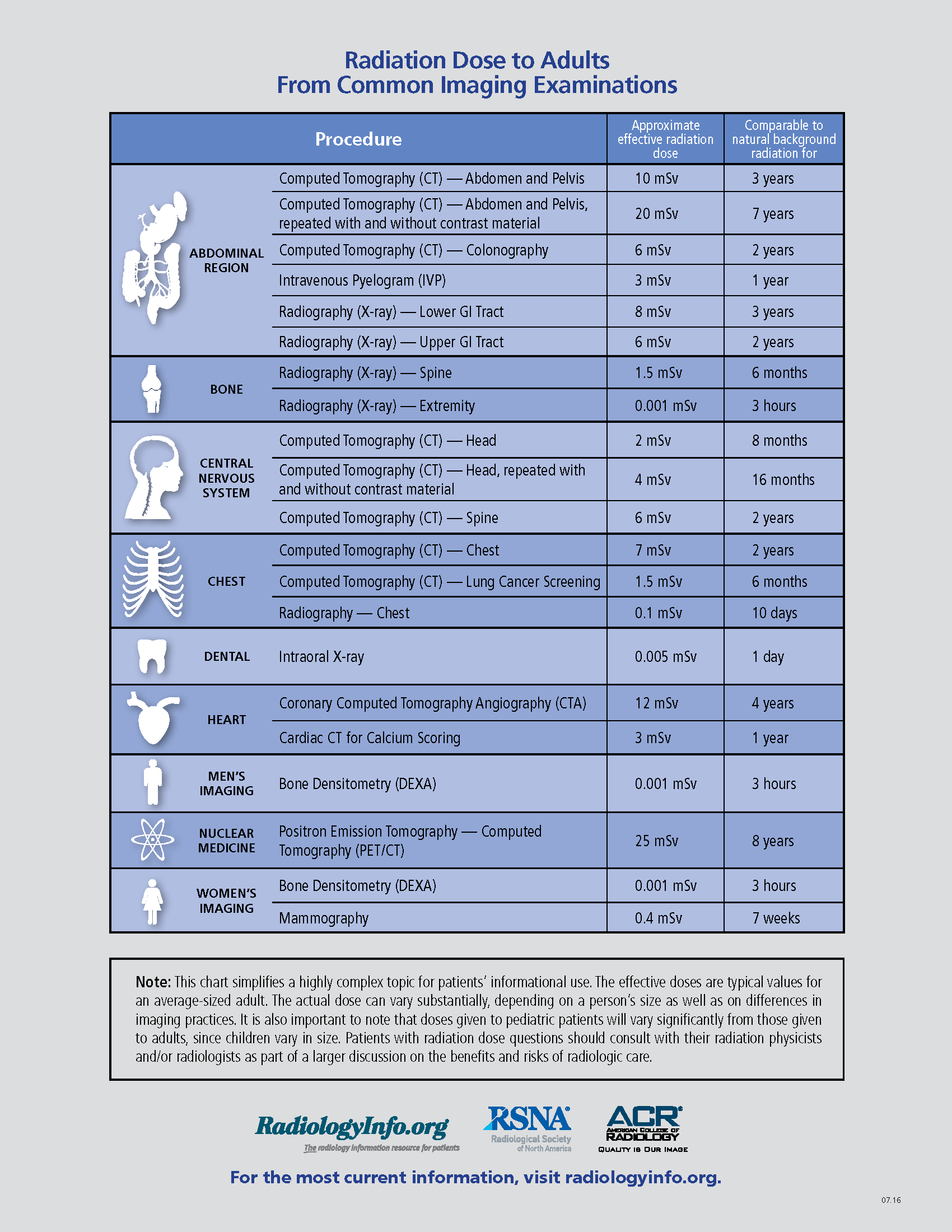People often wonder just how much radiation they will be exposed to when they require imaging as part of their care plan. We are surrounded by sources of radiation all the time from natural sources such as minerals in the ground to man-made sources such as medical x-rays. The chart above shows the sources and relative amount of radiation an average person would encounter over the course of a year.
X-rays are a form of radiant energy, like light or radio waves. Unlike light, x-rays can penetrate the body, which allows radiologists to produce pictures of internal structures. Radiologists used to view these pictures on film but now more commonly review them digitally on computer monitors.
X-ray examinations provide valuable information about your health and play an important role in helping your doctor make an accurate diagnosis. In some cases x-rays are used to assist with therapeutic procedures like placement of tubes or other devices in the body. Below is a list of the radiation doses in adults associated with common radiological procedures as compared to natural exposure.





